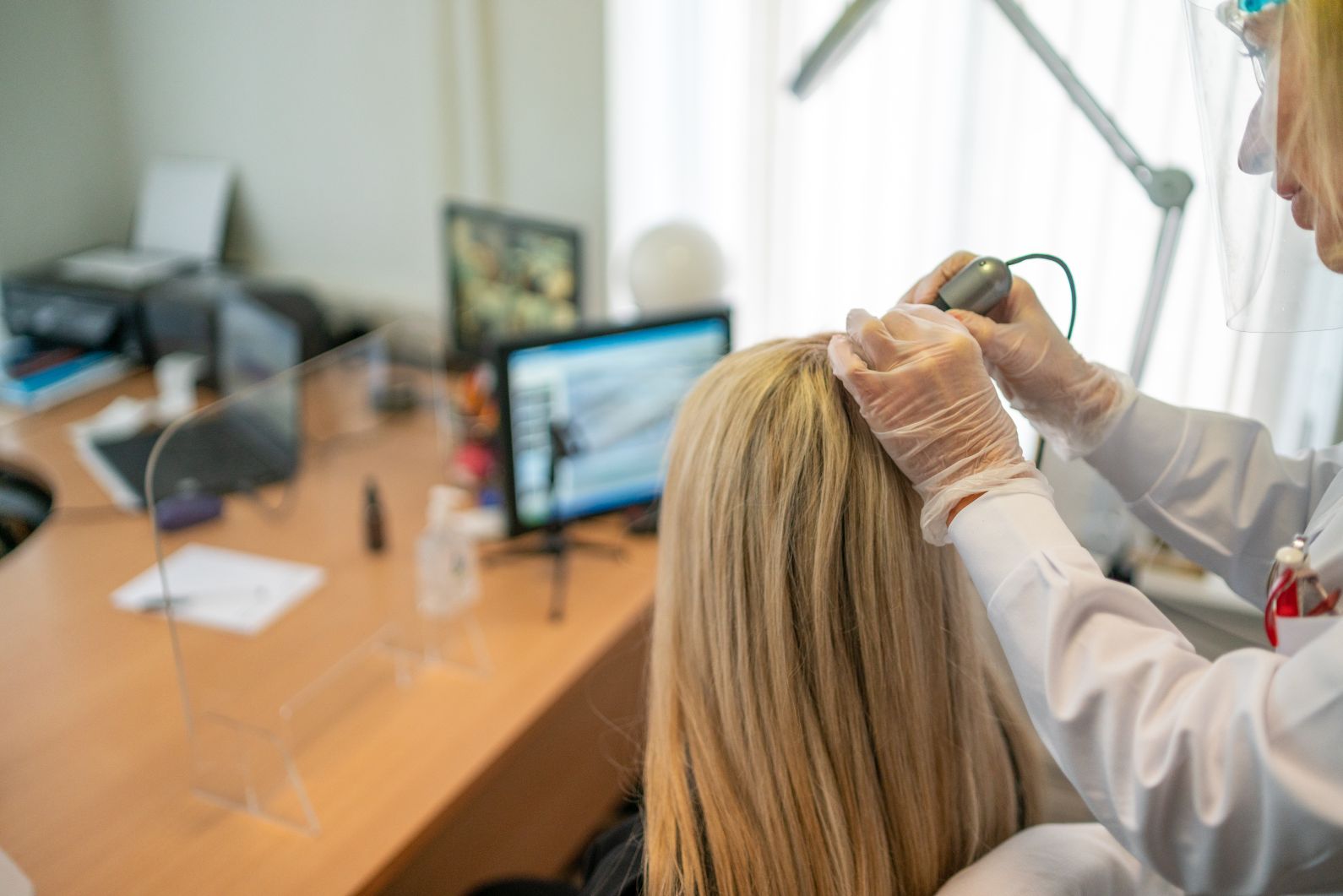Reports indicate that 95% of hair loss in males may be attributed to male pattern baldness. Also referred to as androgenetic alopecia, this condition is said to be more common among white males. Moreover, its prevalence increases with age. It affects 35% of men aged 35 and 80% of white men before they turn 70.
Unlike androgenetic alopecia in females, this condition’s onset is earlier in males. In fact, some experience hair thinning in their 20s. Around the age of 50, an estimated 50% of men are almost or completely bald.
Male pattern baldness is hereditary. This means that you are at a higher risk of having this condition if you have relatives with male pattern baldness.
Causes Of Male Pattern Baldness
Studies state that sufferers lose their hair because they have hair follicles which are sensitive to DHT (Dihydrotestosterone). These sensitive follicles go through a process of miniaturisation (or simply put, they shrink and their lifespan shortens). After being exposed to DHT for a long period of time, the follicles stop growing new hair.
Symptoms Of Male Pattern Baldness
The most common pattern starts with a receding hairline. This happens gradually. As the hairline continues to move backwards, an M-shaped pattern of hair is formed. As the hair loss progresses, a U-shaped (horseshoe) pattern becomes visible. In some cases, the hairline keeps receding until most of the hair is gone.
Meanwhile, for some men, the hair loss takes place in the crown area first. Here, sufferers lose their hair in a circular pattern. From the crown, the hair loss expands to other areas in the scalp. There are also cases wherein, instead of having a receding hairline or a bald spot in the crown area, men experience thinning of hair. This typically results in widening of parts and the reduction of hair volume by as much as 50%.
Treatments For Male Pattern Baldness
Male pattern baldness doesn’t pose any serious health risk. However, much like women, men struggle with hair loss, too. If your self-esteem is suffering because of this condition or if you are unhappy with the way your hair looks, know that there are several treatments for male pattern baldness.
Prior to being treated, the trichologist or dermatologist is going to conduct exams and tests to make a diagnosis of your condition. This is to ascertain that male pattern baldness is causing your hair loss and not some other issues. Typically, the diagnostic process involves the examination of the hair and scalp as well as taking note of the pattern of hair loss. To rule out other health problems, the specialist may also take your medical history and conduct medical tests.
For male pattern baldness, early treatment can significantly slow down the progression of the hair loss. Treatments for male pattern baldness include medications and hair transplant.
Depending on your doctor, you may be given a topical medication or a tablet. These medications are meant to arrest the progression of the hair loss and stimulate the growth of new hair. Results are often observed in four months to a year. However, when you stop using these medications, the balding process resumes.
Hair transplant is often recommended in advanced cases of hair loss or when conventional treatment isn’t enough to stimulate the growth of follicles. What happens here is that hair from areas with active growth are removed and placed in balding spots. Typically, the hair settles and grows in six months. Completion of this treatment takes a long time as breaks are necessary between the procedures. Despite this downside, many are going for this option because it provides a permanent solution to hair loss.
Worried about hair thinning or receding hairline? Know which treatment for male pattern baldness is best for you. Call us at (0)1 6793618 and schedule an appointment with our specialist.
—
Image Attribution: Photograph By Hamzahassan78628 (Own work) [CC BY-SA 4.0], via Wikimedia Commons
Image Resource: https://commons.wikimedia.org/wiki/File%3ASide-step-thick-hair-for-a-man.jpg



